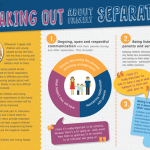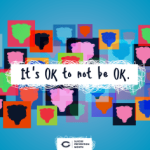
In recent news, Twitter recently implemented a 50% ad reduction, TikTok launched their sustainability initiative and we take a look at LinkedIn’s newly available data set and Snapchat introduced their generative AI.
Spring sales typically kick off in April, offering discounts on clothing for warmer temperatures as well as winter gear. It is also an excellent time to stock up on gardening supplies and other green products.
Twitter’s 50% ad reduction
Elon Musk, Twitter’s CEO, stated on Friday that revenue has seen an unexpectedly large dip due to advertisers ceasing their spending on their platform as pressure from activist groups reduces spenders’ exposure on it. Musk acknowledged it would take some time for Twitter to recover financially.
According to multiple advertising executives and former employees, Twitter’s relationship with advertisers has worsened under Musk’s leadership, due to a lack of trust, high turnover within Twitter’s sales department, and confusion surrounding content moderation policies.
Twitter’s advertising revenues in Europe, Middle East and Africa have also been falling, prompting Twitter to try to maximize its advertising revenues by offering discounts and promotions to clients.
However, despite discounts and promotions being implemented by the company, its revenue continues to lag below expectations; consequently, they plan on firing half of their employees as reported in various media reports.
Layoffs will impact all departments, such as sales, trust and safety, marketing, product and engineering. They aim to bring the workforce in line with global economic realities as well as cut costs by aligning employee positions to global economies.
Though Twitter’s reduction is positive, it won’t make a substantial impactful difference to their bottom line; their advertising sales team accounts for more than 90% of ad revenue generated.
Without meeting the needs of its advertising agency clients, Twitter’s cost reduction efforts won’t be successful. Brand safety is of utmost concern to these agencies and they won’t return until Twitter takes measures to guarantee that their ads don’t appear next to content that could potentially violate brand standards.
TikTok’s sustainability initiative
TikTok provides an incredible platform for creative expression and its global community has provided the ideal forum to discuss climate change. As such, thousands of conversations relating to this issue have taken place on TikTok from diverse viewpoints and voices.
Some creators use their platforms to promote environmentally-friendly products or advocate for sustainable lifestyles. Australian environmental influencer Tara Rose uses TikTok regularly to spark discussions around environmental topics.
EcoTok, an account serving as a hub for sharing environmental-themed creatives from various contributors, is also making an impactful statement through TikTok. Since its launch, this group of creators has amassed 116k followers and built up an engaged TikTok community.
Gen Z is passionate about sustainability, and are using social media to share their environmental efforts with their audience. From trending #thriftok videos to Depop hauls, TikTok’s active environmental movement continues to gain steam with every new post shared on this platform.
Nature Valley recently unveiled a TikTok campaign that rewards families who make eco-conscious decisions with free and exclusive merchandise. Iberdrola also ran an in-feed ad during World Environment Day to encourage individuals to consider the impact of fossil fuels and make changes towards more renewable sources of energy.
TikTok creators who utilize their accounts to address environmental justice are having an impactful influence on their communities. Arielle V. King is an environmental justice attorney who uses TikTok as a forum to address climate and racial injustices faced by African-American communities.
TikTok may seem an unlikely place for discussing environmental issues, but this app has quickly become one of the go-to places for discussing critical topics affecting our world today. This means activists can reach a large audience quickly and provoke action with just one post on TikTok.
LinkedIn’s new data set
LinkedIn is the world’s largest professional network with 850+ million members from 200 countries and territories worldwide. Brands also leverage LinkedIn to connect with their target audiences.
LinkedIn’s new data set aims to assist advertisers in understanding the true value of LinkedIn and how they can utilize it for business growth. It provides metrics and insights such as user engagement rates and popularity of content posted to its platform.
Data provides marketers with insight into how the platform is changing and evolving, enabling them to tailor their strategies accordingly. According to the company, data analysis is an integral part of its growth and expansion plan.
For starting LinkedIn Data, sign in to Dataddo and create a new source. From the list of connectors, choose LinkedIn from which will then allow you to click Next and get going!
Once your connection with LinkedIn is confirmed, you can begin extracting data using your API token and configure snapshotting preferences such as date range ingest, type of sync sync frequency.
LinkedIn’s big data set requires high throughput access to application data, making HDFS an ideal fit. Teradata manages and maintains LinkedIn’s data pipelines to allow data ingest from more than 50 offline data flows into HDFS.
LinkedIn currently maintains over 1,400 datasets in their data warehouse, necessitating them to construct pipelines for batch processing. They’re working hard on expanding this infrastructure as new sources and services come on board; doing so will allow them to better serve users while increasing revenue and decreasing expenses.
Snapchat’s generative AI
Snapchat has begun integrating generative AI, a technology which generates new ideas on demand. They’re not the first company to implement this tech but Snapchat stands out by becoming one of the latest. Furthermore, this marks the first time any social media platform has made available this feature to paying subscribers.
OpenAI’s ChatGPT will power this feature, which uses text generators to produce texts that answer trivia questions, write haikus and generate recipe ideas. It will only be accessible to paying subscribers of Snapchat+ – an upgrade program launched last June at $3.99 monthly subscription cost.
Snapchat warns users that its chatbot may not always be safe; to address this, new tools have been released such as age filters and insights for parents in order to protect children from inappropriate responses that violate Snap’s trust and safety guidelines.
As more companies use generative AI, experts worry about its potential to spread disinformation or groom children for predatory purposes. Generative AI models have been known to mimic human speech, leading minors into potentially risky situations. Furthermore, text-to-image AI allows toxic photos and deepfake content creation – both of which could be exploited by predators as targets.
Teen-focused platforms, in particular, have seen their user bases dwindle due to ad revenue being difficult to secure. Generative AI could provide Snap with a tool for growing its subscriber base while potentially decreasing engagement levels and altering its bottom line.
Social media platforms must take an unavoidable risk when adopting AI tools; while they must ensure there are enough safeguards in place to prevent misuse of the technology. This is particularly relevant when addressing mental health issues among adolescents who could potentially be vulnerable to advice that is harmful.
YouTube’s weekend one live broadcast
YouTube plans to compete with broadcast and cable television by streaming live events, giving it an edge over services such as Hulu Plus and Netflix that do not currently provide such live-streamed content.
This week, YouTube unveiled their newest platform called YouTube Live. As its name implies, this provides users with a personalized home page where they can see upcoming live events from their preferred partners and subscribe to them so they are informed when they begin streaming live content.
Go Live Together allows creators to invite guests onto their livestream, where they can watch from the convenience of their own device – without revealing channel and user information to viewers during the broadcast. In turn, hosts of livestreams can gain insights into the performance of their stream which can then be shared with viewers.
For creators to access this feature, they must first be approved by YouTube and verify their identity through a verified phone number. Once this process has been completed, live streaming can commence immediately.
The YouTube team is still developing features to make the experience more compelling for viewers, including allowing viewers to submit questions during live events that will temporarily remain pinned at the top of chats.
These changes should set YouTube apart from other social media platforms and enhance user experience. YouTube is currently testing “live rings”, which indicate when creators are currently live streaming their broadcast.
Google’s long-term goal of making YouTube the go-to destination for live entertainment has now been made one step closer with this announcement, signaling their willingness to put money where their mouth is and expand beyond its current rewind-to-play model to reach more consumers.





